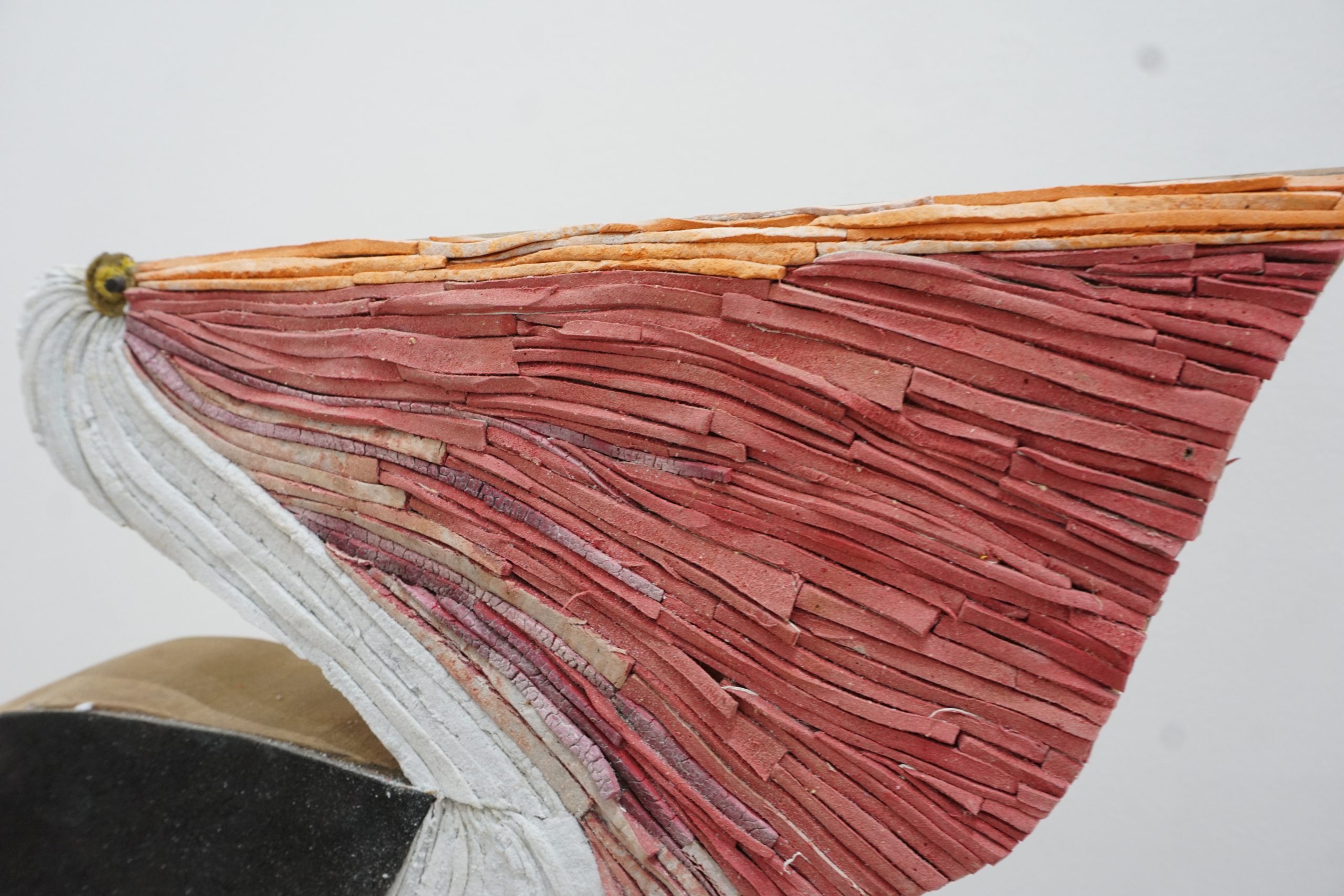Christine Foletti is the newest to have work exhibited at the Gunnedah Bicentennial Creative Arts Gallery and while she calls herself a nurse and midwife before an artist, she believes everyone has the capability to unlock their creative side.
Her work is notable by the bright colours of her flora and fauna subjects but made more intriguing by a closer look.
Christine’s interest in using waste as an art medium came from working in remote areas, particularly on Christmas Island.
“I started beach cleaning and finding random objects, picking them up and thinking how I could repurpose them,” she said.
“I was working out in western NSW, near Bourke, during COVID and I went around near the sale yards and there was all this old rusted wire. I thought ‘this looks interesting’ and I just started to create things out of that.
“It is about repurposing something that was no longer serviceable but giving it another view and another picture.”
She has married the beauty of her surrounding nature with the plastic and pollution that ironically puts them at risk.
Many of her artworks have been made with rubber thongs, aluminium cans and other items that have washed onto shore.
Before COVID, she was selling her art at a market when Gunnedah Cultural Precinct’s Jade Punch approached her.
It was early last year Jade suggested her art should be exhibited at the Gunnedah Bicentennial Creative Arts Gallery .

“I thought this was a great opportunity to put [my] art out there,” Christine said.
“It is kind of a nice way to give back because I think often … there are a lot of creative people living and working [rurally and remotely] and it is my little way of giving back to communities.”
She had previously exhibited at Pacific Palms where she won a prize for a Banksia artwork in about 2018.
By noticing the natural in day-to-day life she learns to see those things as inspiration for new pieces.
She is currently looking at other mediums such as lino prints.
“When I do a lino print I can replicate that five or 10 times but [when I made the] the bowerbird [artwork], there is only one of them.”
A lot of the pieces at the exhibition had been created in the last 12 months with a few being earlier pieces.
Christine believed she was like a lot of people who looked at themselves and had never seen a creative person.
“[People think about themselves as] ‘I am not creative, I did not have any formal training’, or we want it to look perfect at the beginning,” she said.
Christine recalled creating an earlier piece of a baby frigate bird on Christmas Island.
She was concerned it was not a perfect resemblance of the avian and relayed that to her artistically trained sister.
Christine was given a piece of advice that changed her way of thinking about creativity.
“It doesn’t have to,” her sister told her. “It just has to be an image of one.”
From then, her creative process was more forgiving. She understood that mistakes could open up pathways for something different or to try again in the future.
“I was a bit of a perfectionist, but you just have to have a go,” Christine said.

This piece, ‘Juvenile Frigate’, was one Christine’s first in the waste-to-art genre. She was taught that not all art needed to be a perfect replica of its subject.
“I only liked new thongs [to create art] but I realised very soon the more textured and the older the thong was … it was easier to depict things.
“It is all about giving it a go and not being too hard on yourself.
“We all have potential to give it a go and it is just practice.
“A lot of it is just by observation, trial and error and making lots of mistakes along the way.
“Each time you make something, you are learning something.”
She even mentioned that art can be good for practitioners.
“It makes you look at things from a different perspective and it is also very good for self care as well,” she said.
A lot of her favourite pieces came from her early work.
“I often like to depict where I live and what is around me and also what is vulnerable because sometimes plastic causes damage to the environment. Especially on Christmas Island and Cocos, it actually affects the ability of turtles to breed because they cannot get up on the beach,” she said.
“I am not saying I can change the world or anything but sometimes it is just drawing attention to what surrounds us. [Things that are] beautiful but also quite vulnerable and at risk.”
To order photos from this page click here



